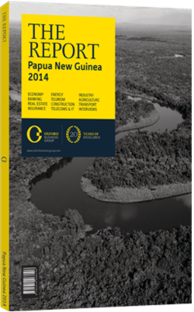OBG talks to Tim Blackburn, Managing Director, Swire Shipping

Interview: Tim Blackburn
What is the potential for Lae’s port to be used as a trade hub in the South Pacific region and beyond?
TIM BLACKBURN: The island nations of the South Pacific region depend on reliable, frequent and cost effective shipping services to provide access to international markets and to support sustained economic growth.
Lae is ideally located to act as a domestic and regional trans-shipment hub in the South Pacific. However, realising this potential as a trade centre is dependent on the development of an efficient, secure port, with modern infrastructure designed to meet the requirements of port users over the long term. It will be beneficial to take guidance from shipping lines and vessel operators most familiar with the unique operating environment, including those who have established longterm partnerships with service providers. In addition to increasing productivity, a trade hub in Lae could also create opportunities for network optimisation and the development of new shipping services in the region.
In what way will the relocation of Port Moresby’s commercial port to Motukea Island help to improve the city’s logistic challenges?
BLACKBURN: The proposed relocation will have an immediate impact on the volume of heavy vehicles and containers that are currently directed via the downtown areas of Port Moresby. This will reduce the pressure on roads and other infrastructure in the commercial and residential centre of the National Capital District.
From a logistics perspective, the relocation of the port to Motukea will enable carriers to work more closely with hauliers, depot providers and other partners in the supply chain, to develop integrated logistics solutions for importers and exporters while controlling costs.
From a health and safety and environmental position, the relocated port will significantly reduce the distances that containers travel between the wharf and off-dock storage areas, thereby cutting back harmful emissions. The consolidation of logistics and cargo-handling activity at Motukea Island will also improve the condition and the safety of the roads in the downtown area for other users.
How can PNG create a more efficient transport network and enhance interconnectivity?
BLACKBURN: In our opinion the priority is investment in existing port infrastructure upgrades, which would reduce berth congestion and improve cargo-handling productivity on the wharf. This would allow port infrastructure to meet international industry standards. There is also an urgent need to invest in a better road infrastructure around the ports and container depots, as well as between ports and major commercial centres. Training in areas such as planning and logistics will be required in order to strengthen interconnectivity. This demands investment in improving processes, integrated systems design and the adoption of innovative technologies, which must be sufficiently robust to meet the demands of the operating environment.
To what extent are fleet-wide slow-steaming initiatives redefining the shipping industry?
BLACKBURN: Slow-steaming initiatives have had a considerable impact on the shipping industry for a number of different reasons.
Operating ships at reduced speeds is an effective means to reduce capacity during a period when there is already an oversupply of ships; however, most importantly, slow-steaming significantly reduces bunker fuel consumption, where bunker costs represent the single largest component of daily operating costs.
At the same time, slow-steaming initiatives have also led to increased ship scrapping, the demolition of older tonnage and acceleration in the development of new, fuel-efficient designs, which represent the future of the shipping industry.
In addition to new designs for ships, there have also been major advances in engine technologies and exciting innovations in alternative propulsion systems and fuel sources, which will change our industry forever.
You have reached the limit of premium articles you can view for free.
Choose from the options below to purchase print or digital editions of our Reports. You can also purchase a website subscription giving you unlimited access to all of our Reports online for 12 months.
If you have already purchased this Report or have a website subscription, please login to continue.

